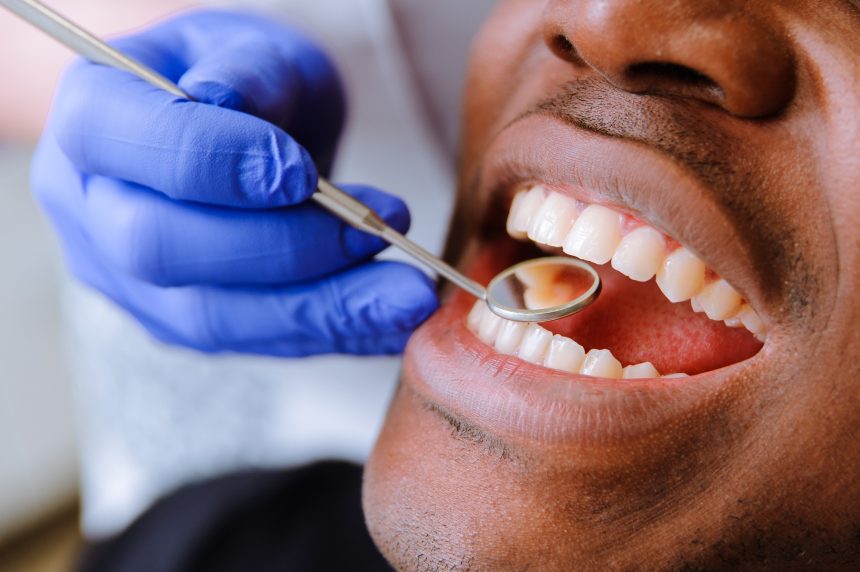From bridges and crowns to implants and braces, there are many different types of dental appliances available on the market today. Your dentist may recommend one or more treatments to help you correct damaged or misaligned teeth.
If you’re fitted for one, it’s important to use it the right way. Today, we’re sharing six key tips to help you get the most benefit out of your dental appliances.
-
Understand Its Use
First, it’s critical to understand why you are receiving the appliance in the first place. Your dentist should thoroughly assess your dental condition and explain the issue before discussing your options.
Will it be a permanent dental appliance, such as a bridge? These are partial dentures designed to replace lost teeth. If you’re only missing one tooth, they may recommend a dental crown instead.
Or, will it be a removable one, such as a nighttime mouthguard to prevent excessive tooth grinding, called bruxism? Your dentist may also recommend a dental appliance for sleep apnea, which you’ll put on at night and remove in the morning.
Knowledge is critical here, so make sure to ask any questions you may have. You can’t take care of the device if you don’t know how or why it works.
-
Follow Diet Instructions
Some dental appliances will come with strict instructions on what you can and cannot eat while they’re in place. For instance, traditional metal braces aren’t usable with sticky or hard foods, such as popcorn. Likewise, you shouldn’t eat or drink once you have your sleep apnea dental appliance in for the night.
Your dentist should send you home with a list of items you can eat, as well as a list of items to avoid.
-
Remove and Clean It
If your appliance is removable, then make sure to closely follow all instructions on how to clean it. For instance, you should rinse your mouthguard in cool or lukewarm water as soon as you wake up in the morning, and use denture cleaner to give it a good soak once a week.
Other removable gear, including sleep apnea dental appliances, will come with its own set of cleaning guidelines. You’ll want to avoid using harsh cleaners and never clean your appliance with bleach. If possible, look for a brush that’s specially made to clean appliances, as a toothbrush can be too abrasive for the device.
As you scrub, use gentle motions. Even the smallest abrasions in your device can harbor bacteria, which could compromise your oral health. Ask your general dentist or sleep apnea dentist if there are any special steps you need to follow when cleaning your device.
-
Clean Around It
What if your dental appliance is permanent and fixed in place, like a bridge? In that case, you’ll still need to clean around it. Most are designed to act like real, natural teeth. That means you can brush and floss around them easily.
You can usually clean those types of appliances as you would the rest of your mouth. By doing so, you can extend their longevity and help them look great for as long as possible.
If there are any metal components to your appliance, you’ll need to use special care when cleaning around those parts. Yet, it’s still important to do so frequently. Allowing plaque and food debris to gather within the mechanism can warp it, damage it, and decrease its effectiveness.
-
Protect It Outside of Your Mouth
When your dental appliance is not securely inside of your mouth, make sure to store it in the right spot. If it came with an associated container, allow it to dry completely after you rinse it and then store it inside there. This is especially the case if you’re traveling, and you need to keep it safe inside of your luggage.
Another reason to put up your appliances when they’re not in use? Children or small pets might consider them to be exciting toys, and they could “try them on” for size, which could pose a risk to their health and safety.
If you keep your dental appliance on your nightstand or beside your bathroom sink, make sure it’s far away from any curious paws or tiny hands. These devices can be investments, so you’ll want to keep yours as safe as possible!
-
Clean Your Case
You could take all the precautions in the world to keep your dental appliance clean, but none of those steps will be worth it if you’re just putting it back into a dirty case. While you don’t have to clean your case as frequently as your appliance, it’s still a good idea to give it a good scrub at least once a week.
Use a mild dish detergent to remove any grime, and dry it completely. Never place it in the dishwasher to clean it, as it could melt in the high heat. If your case is plastic, you may need to replace it every six to 12 months to make sure it stays in great shape.
Get the Most Out of Your Dental Appliances
With the right care, you can help your dental appliances work for you. These are special pieces that are designed to improve your dental health and brighten your smile from the inside out.
Keeping these six tips in mind, talk to your dentist about how to use and maintain the appliance. Over time, you’ll notice that yours will continue to look great and perform well.
Looking for more tips to help you live your best life? We’ve got plenty more on our site, so check out our Lifestyle guides!














